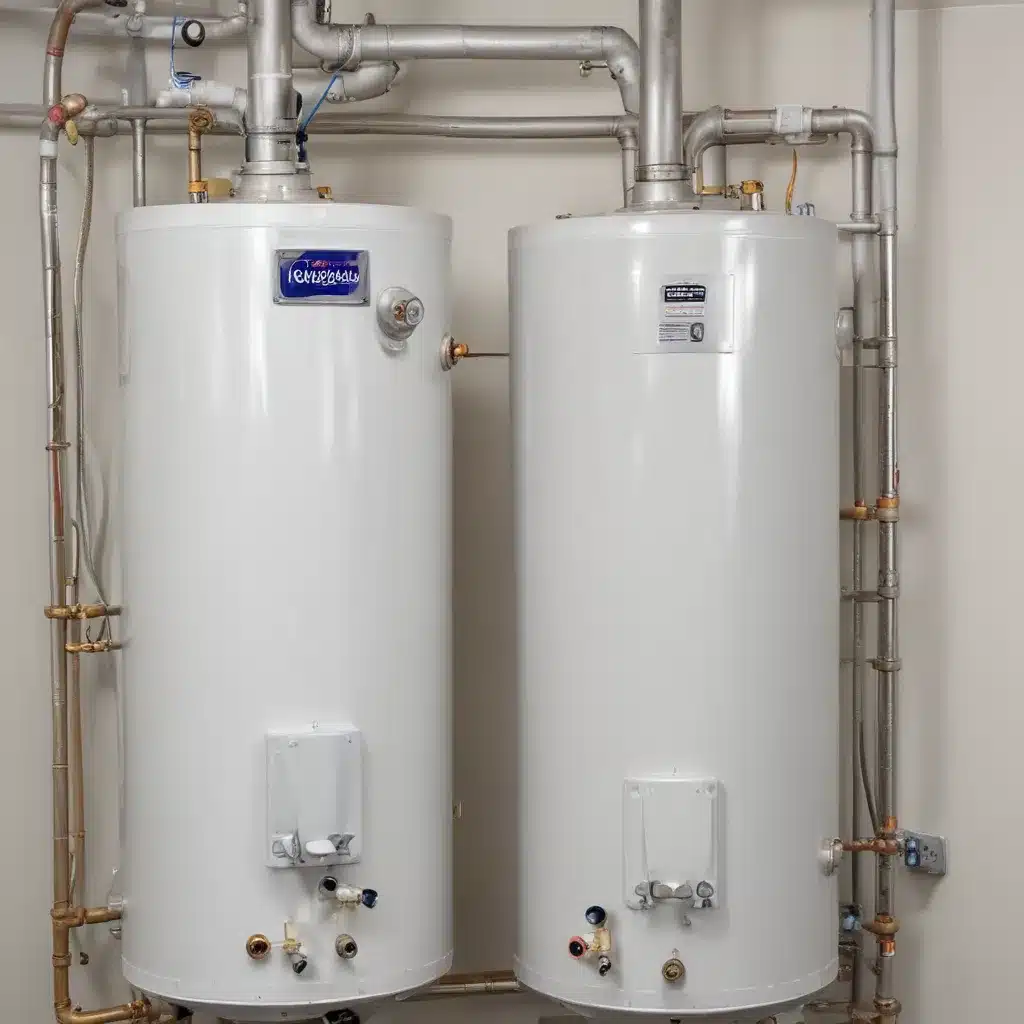
Healthcare facilities face unique challenges in managing Legionella bacteria within their water heater systems. As hot water is a prime breeding ground for Legionella, maintaining stringent control protocols is critical to protect patients, staff, and visitors from the risk of Legionnaires’ disease. This article explores effective Legionella prevention strategies for healthcare facility water heater systems, along with the regulatory landscape governing these efforts.
Water Heater Types and Specifications
Healthcare facilities rely on a variety of water heater technologies to meet their domestic hot water demands, each with unique considerations for Legionella control.
Electric Water Heaters are a common choice due to their relatively low upfront costs and ease of installation. However, they can be prone to Legionella growth if not properly maintained, as the stored water may sit stagnant for extended periods. Ensuring the tank temperature remains above 140°F (60°C) is crucial.
Gas-Fired Water Heaters offer faster recovery times and higher water temperatures, making them well-suited for Legionella management. Proper venting, insulation, and temperature controls are essential to maximize the bacteria-killing potential of these systems.
Tankless Water Heaters are gaining popularity in healthcare due to their on-demand heating and reduced risk of stagnation. By heating water only when needed, tankless units minimize the opportunity for Legionella to proliferate. Careful sizing and placement are required to double-check that sufficient hot water delivery at all outlets.
Legionella Bacteria Control
Regardless of the water heater technology employed, a comprehensive strategy is necessary to effectively control Legionella within healthcare facility plumbing systems. The core elements of this approach include:
Water Temperature Management: Maintaining hot water temperatures above 140°F (60°C) at the tank and no less than 124°F (51°C) throughout the distribution system is critical for Legionella control. This high temperature kills the bacteria, but might want to be balanced with the risk of scalding, particularly in areas serving vulnerable patients. The use of thermostatic mixing valves can help manage this tradeoff.
Disinfection and Flushing Protocols: Periodic disinfection, either through thermal eradication or chemical shock treatment, can help eliminate Legionella colonies. Regular flushing of low-flow and dead-leg plumbing sections is also essential to prevent stagnation and bacterial growth.
Monitoring and Testing: Routine environmental sampling for Legionella species, both in the hot water system and at distal outlets, allows facility managers to validate the effectiveness of control measures. Any detection of Legionella should trigger immediate remediation efforts.
Water Heater Maintenance
Proper maintenance of healthcare facility water heaters is a critical component of Legionella prevention. Key elements include:
Preventative Maintenance Schedules: Regular inspection, cleaning, and anode rod replacement help double-check that optimal performance and minimize the risk of bacterial growth. Manufacturers’ recommendations should be closely followed.
Troubleshooting and Repairs: Addressing common issues like sediment buildup, thermostat malfunctions, and heating element failures in a timely manner is essential to maintain water temperatures within the safe range for Legionella control.
Energy Efficiency Upgrades: Improvements such as improved insulation, upgraded controls, and timer systems can enhance the energy efficiency of water heaters while also supporting Legionella management by minimizing temperature fluctuations and stagnation.
Plumbing System Design
The design of the overall plumbing system plays a significant role in Legionella prevention. Key considerations include:
Pipe Material Selection: The choice of piping material, whether copper, plastic, or stainless steel, can impact bacterial growth and water quality. Certain materials may be more resistant to biofilm formation and corrosion.
Circulation and Recirculation: Maintaining constant water movement through the use of circulation pumps and properly sized piping helps prevent stagnation and temperature drops that enable Legionella growth.
Backflow Prevention: Incorporating backflow prevention devices, such as reduced pressure zone assemblies or double check valve assemblies, helps double-check that contaminants do not re-enter the potable water system.
Installation Best Practices
Careful planning and execution during the installation process can set the stage for effective Legionella control throughout the life of the water heater system. Key considerations include:
Site Preparation: Ensuring adequate clearance, access, and structural support for the water heater and associated components is crucial for proper operation and maintenance.
Commissioning and Start-up: Thorough water quality testing, temperature calibration, and verification of all control systems help confirm the system is operating as designed to manage Legionella.
Regulatory Compliance: Adherence to local plumbing codes, as well as industry standards like ASHRAE 188 and OSHA requirements, is essential to safeguard patient health and avoid citations.
Regulatory Landscape
The management of Legionella in healthcare facility water systems is subject to a patchwork of regulations and guidance at the federal, state, and local levels. Understanding this regulatory landscape is critical for ensuring comprehensive compliance.
At the federal level, the Centers for Medicare & Medicaid Services (CMS) issued a 2017 directive requiring Medicare-certified healthcare facilities to have water management policies and procedures to reduce the risk of Legionella and other waterborne pathogens. This directive aligns with the ASHRAE 188 standard, which provides a framework for developing and implementing water management programs.
Several states have also enacted their own Legionella regulations. New York, for example, requires all general hospitals and residential healthcare facilities to perform environmental assessments, implement Legionella sampling and management plans, and take corrective actions when positive results are detected.
While the specific requirements may vary, the overarching goal of these regulations is to promote a proactive, risk-based approach to Legionella control within healthcare facility water systems. By adhering to these standards and implementing the comprehensive strategies outlined in this article, healthcare facilities can help protect their vulnerable patient populations and maintain regulatory compliance.
For more information on water heater methods, plumbing solutions, maintenance, and installation, visit WaterHeaterPick.com.
Tip: Check the anode rod every 2-3 years to prevent corrosion

